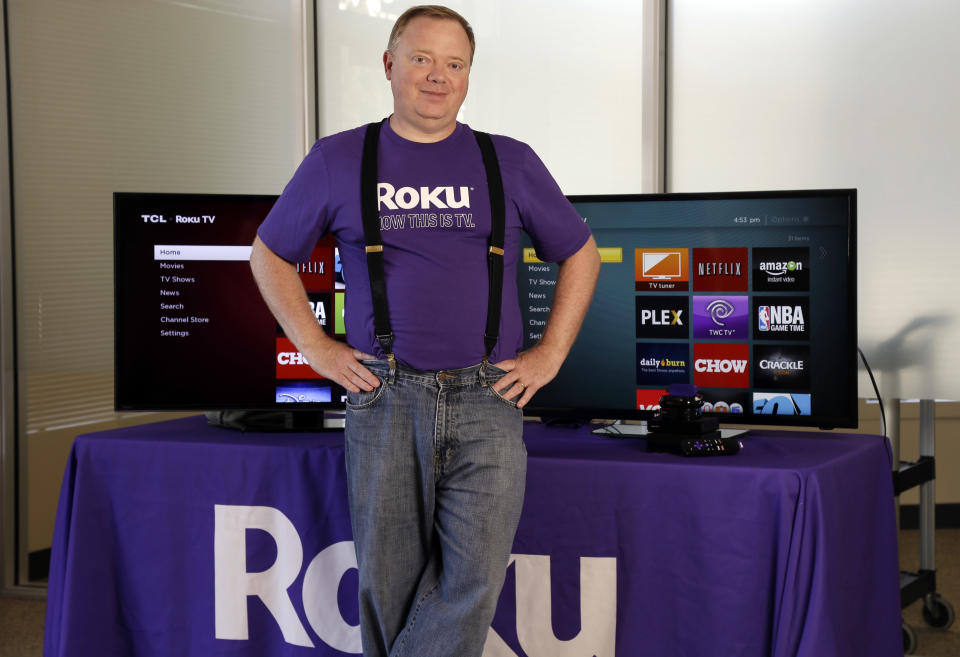Roku is a very attractive acquisition target in the streaming wars
Disney will launch its Disney+ standalone streaming product in the second half of this year. AT&T will launch a three-tiered WarnerMedia standalone streaming product in the second half of this year featuring HBO content. Apple is holding a March 25 event where it is expected to unveil its standalone streaming product.
All of these giant names are diving into the OTT race and spending big on original content.
Not Roku. Roku has amassed 27 million users, its stock is up 105% this year, and it is Needham’s top stock pick for 2019—all with no plans to get into original content.
In a research note this week, Needham raised its price target on Roku shares to $85, a $20 hike from current levels.
Why so bullish?
Roku is an “arms dealer,” Needham writes, since it aggregates 5,000 different third-party streaming apps. More importantly, “every new streaming service (including DIS, T, and APPL) will sign contracts (including rev shares) that allow its new service to be viewed by Roku’s users, we believe.”
Roku gets a share of revenue from nearly all 5,000 apps on its platform. And more televisions, from manufacturers like Sharp and Philips (though not the biggest names, Samsung and LG) now come preloaded with Roku.
All of this makes Roku a very attractive acquisition target.

Roku is a pure play.
While Apple is seeking to launch its own paid subscription service and will surely overspend on original content for that service, Roku is not. It can keep growing at a fast clip simply by being the host platform for the video apps of other companies.
To be sure, Roku’s competitors are all giants: Apple (Apple TV devices); Amazon (Fire TV Stick devices and Amazon Prime streaming); and Google (YouTube TV streaming efforts); but Needham writes, “We believe Roku will not be displaced by these large internet companies” because of its small size (i.e. it can still triple its revenue without getting displaced) and because of the growth coming from TV makers that preload Roku onto their TVs now.
And 10 million of Roku’s users do not have any linear TV at all, making Roku their only portal to television. Roku’s ad demographics also “skew young (i.e., valuable),” and Roku, even though it owns none of its own content, does have a “Roku Channel” that aggregates the best content and gives Roku, the company, more control of the ads that appear on its platform.
Finally, even with its impressive growth, Roku is small ($6.9 billion market cap) compared to the giants that clearly see OTT as a top priority (Disney CEO Bob Iger recently called streaming its “number one priority”), so if one of those players wants to own one of the top two streaming devices, it could buy Roku “at a large takeover premium.”
—
Daniel Roberts is a senior writer at Yahoo Finance and closely covers streaming tech. Follow him on Twitter at @readDanwrite.
Read more:
When will American TV viewers hit peak streaming?
Disney says streaming is now its ‘number one priority’
Apple’s video strategy ‘will remain uninspiring’ says KeyBanc

